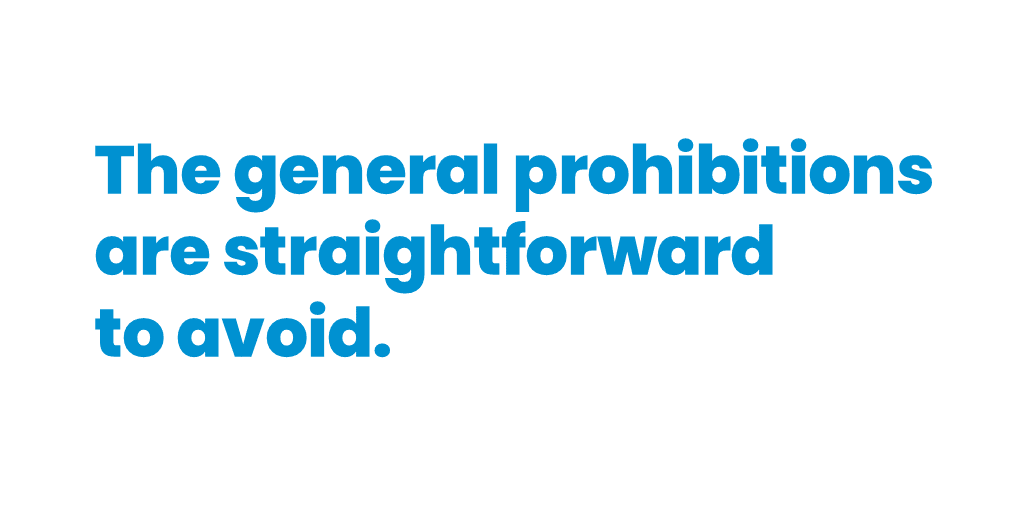
SEC Marketing Rule: Implications for news releases that promote third-party ratings and rankings
The window of time for SEC-registered investment advisors to conform to the new SEC Marketing Rule is drawing to a close. The new regulation became effective in May 2021 with an 18-month transitional period for RIAs to modify their compliance practices prior to enforcement. Starting Nov. 4, the SEC requires adherence to the new rules.
Here we focus on implications for RIAs seeking to promote third-party ratings and rankings—such as top advisor lists—through press releases and social media. Best practices are still evolving, so what follows is preliminary exploration from a communications professional’s perspective. Ultimately, the fine points will be shaped by compliance professionals.
News release as advertisement
While compliance professionals are still evaluating the practical implications of the rulemaking, there is a distinct possibility that the SEC might consider news releases that promote third party rankings to be ads since one purpose is to “offer” the firm’s securities-related services to prospective clients—even if indirectly.
After all, the nature of a top-advisor list is to make the public aware of the advisors featured. When an advisor promotes its inclusion, it implicitly adopts that purpose. The same goes for social media posts that use the news release as background.
RIAs are required to keep copies of advertisements under new books and records rules. The SEC also says it will shape examination questions based on firms’ responses to new questions about advertisements in their Form ADV.
The SEC dedicates a whole section to third-party ratings in its Issuing Release for the Marketing Rule, starting on page 158. The SEC says third-party ratings are prohibited in an advertisement “unless they comply with the rule’s general prohibitions and additional conditions.”
Put another way, the touting of third-party ratings—whether in a traditional ad or a news release, which the SEC is likely to consider an ad—is expressly permitted, so long as RIAs follow both the general prohibitions and additional considerations.
General prohibitions
The phrase “general prohibitions” refers to a set of seven specific prohibitions that, together, are the foundational principles of the Marketing Rule. One is a prohibition of making untrue statements of material facts. Another is a prohibition of presenting investment results or past advice in a way that isn’t fair and balanced.
So long as the third-party rating entity is credible and the advisor doesn’t use the rating inappropriately—for example, to advertise one kind of service when the rating is for another kind of service—the general prohibitions are straightforward to avoid.
Additional considerations
The SEC also highlights additional points for RIAs that wish to promote third-party ratings. First of all, the rating agency must be a true third party and one that conducts ratings as part of the normal course of its business. The idea is to separate third-party raters from those providing testimonials and endorsements (and to make sure RIAs don’t have a hand in crafting their own ratings).
But that’s not enough. The RIA still has to fulfill two more requirements:
Due diligence requirement. The RIA must “have a reasonable basis that any questionnaire or survey used in the preparation of the third-party rating is structured to make it equally easy for a participant to provide favorable and unfavorable responses, and is not designed or prepared to produce any predetermined result.”
Ideally a rating entity—say, a financial news publication—will be aware of this requirement on RIAs and will post enough of the rating methodology to make it straightforward for RIAs to fulfill the obligation. If not, it may be necessary to inquire of the rating firm.
Disclosure requirement. The RIA must disclose (or ensure the third-party rater has disclosed) all of the following:
- “(i) the date on which the rating was given and the period of time upon which the rating was based;
- “(ii) the identity of the third-party that created and tabulated the rating; and
- “(iii) if applicable, that compensation has been provided directly or indirectly by the adviser in connection with obtaining or using the third-party rating.”
When presenting the rating, RIAs must take care to ensure these disclosures are presented with equal prominence as the rating itself.
Putting the pieces together
It may be new to think of a news release as an advertisement, but that’s an upshot of the SEC’s principles-based approach to defining and regulating marketing.
A news release remains a natural way to promote a third-party rating, including as background for social media posts. Its format can readily accommodate the need for disclosure. In fact, RIAs and/or their public relations partners may already have been fulfilling most or all of the disclosure requirements for years. It’s typical to include a paragraph about methodology in the closing paragraphs of a release, prior to the boilerplate section. Now that paragraph just needs a little more careful review.
The due diligence requirement may also be fairly straightforward for most industry-specific ratings and rankings, as it’s likely in the interest of the third-party rater to provide the needed information. (Where this requirement may be harder, by contrast, is seeking assurance from the likes of Google or Yelp that ratings methodologies are fair. In that case, the rating firm may be reluctant to share much or anything.)
The bottom line is that with some additional attention to new requirements, RIAs are likely to find that promoting ratings—so long as they are credible!—will continue to be possible.
Subscribe.
Receive the latest news and insights from Lowe Group.